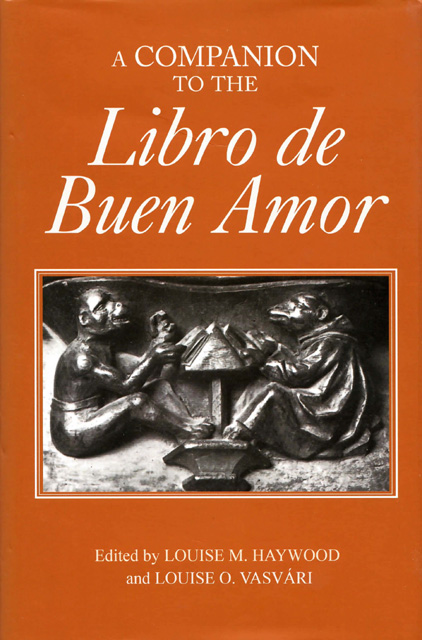Book contents
The Relationship between the Libro de Buen Amor and Celestina: Does Trotaconventos Perform a Philocaptio Spell on Doña Endrina?
Published online by Cambridge University Press: 10 May 2023
Summary
Keith Whinnom, in his University of Exeter inaugural lecture of 1967, ‘Spanish Literary Historiography: Three Forms of Distortion’ (publ. 1968), poured cold water on the notion that the Libro de Buen Amor might have had any influence on Celestina, as argued by, for example, F. Castro Guisasola (1924). The case for seeing such an influence has been argued again by Samuel G. Armistead (1973, 1976–77), which leads us to wonder if any of the situational and verbal coincidences could possibly indicate a link, other than their common source in the Pamphilus. One area of difference has seemed clear enough, however; unlike Trotaconventos, Rojas’s creation was definitely an hechicera or sorceress and, as I think I have proved in a monograph, Witchcraft in ‘Celestina’ (1995), also a bruja or witch. She performs a philocaptio spell to capture Melibea’s love, but exceeds the usual bounds of white magic for these spells and enters the realms of black magic by conjuring up a demon to help her in her enterprise. As María Rosa Lida de Malkiel pointed out in La originalidad artística de ‘La Celestina’ (1962: 560), although Juan Ruiz’s creation Trotaconventos mentions her escantos or enchantments a number of times, the text seems to show her trying to seduce Doña Endrina on behalf of Don Melón by her arts of persuasion alone. This, however, was written before Peter Russell’s seminal article on magic in Celestina (1963), in which he explained the basis of Celestina’s philocaptio spell.
Celestina appears at Melibea’s house selling a skein of thread which has already been anointed with snake oil and into which a devil has been conjured. After touching the skein, Alisa leaves her daughter alone to conclude bargaining for it with Celestina, who procures from Melibea her girdle or cordón. This is more than sufficient to capture Melibea’s love for Calisto. As Alan Deyermond has argued persuasively (1977), the Devil is unleashed in the text through the conjuration, and infects everyone who touches the cordón, and by extension the gold chain with which Calisto rewards Celestina, with the tragic result of the deaths of most of the principals in the work.
- Type
- Chapter
- Information
- A Companion to the Libro de Buen Amor , pp. 123 - 128Publisher: Boydell & BrewerPrint publication year: 2004



